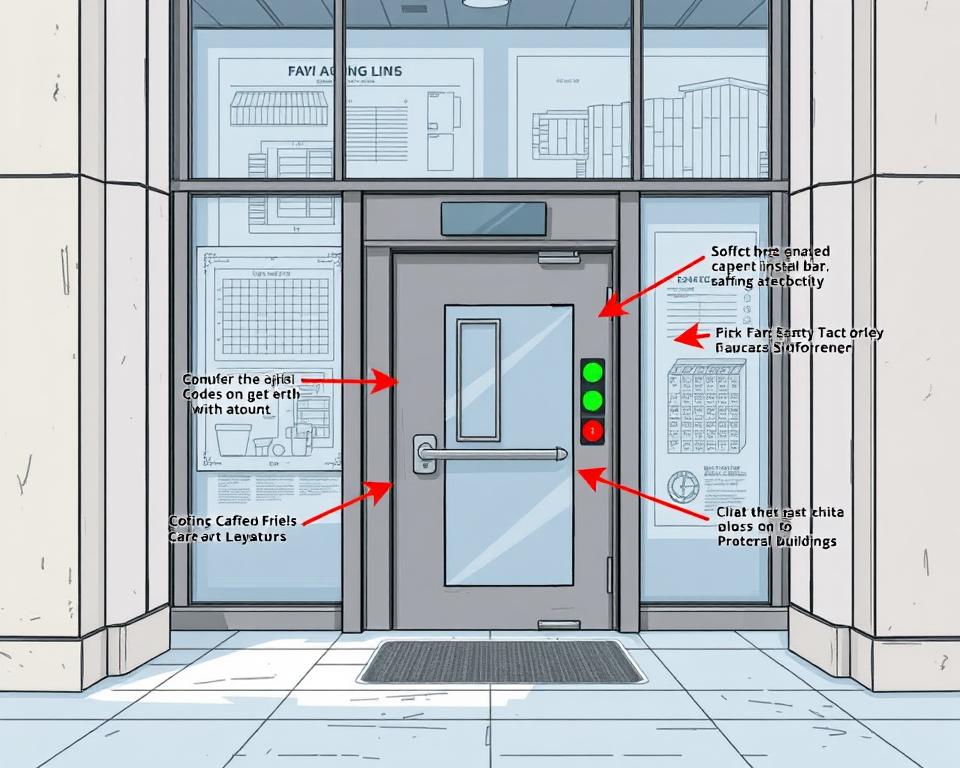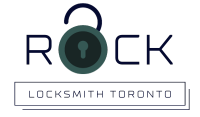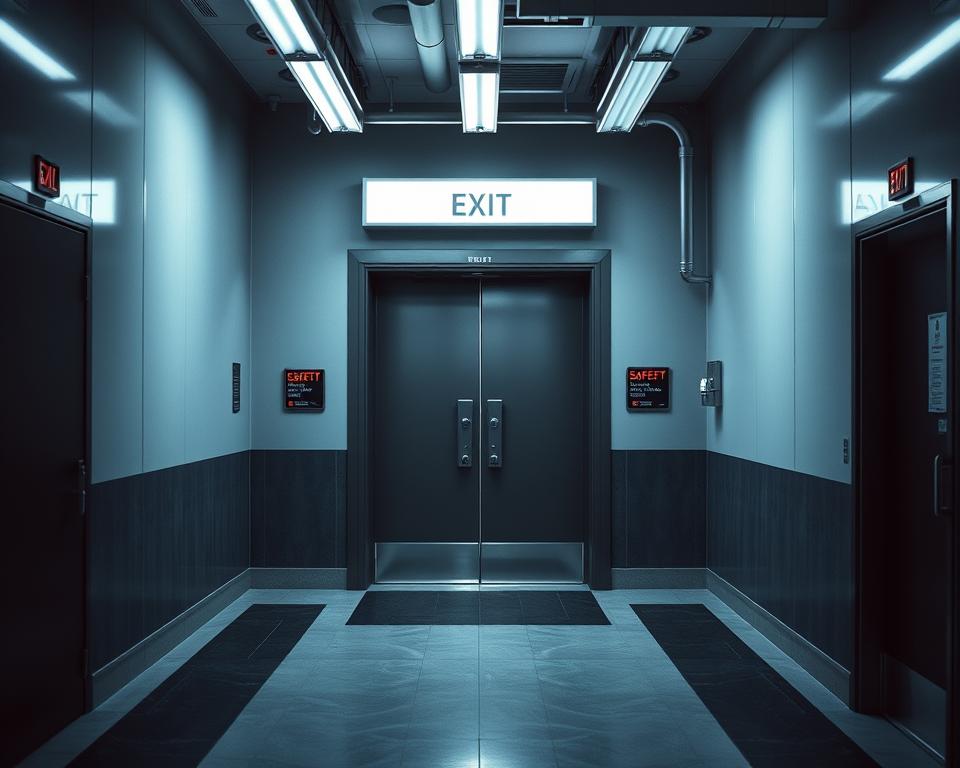Installing panic bars is key for safety in public and commercial buildings. It ensures everyone can exit quickly during an emergency. Panic bars, also known as emergency exit devices, let people open doors easily by pushing a bar. This action unlocks the door. They are crucial for preventing dangerous situations like stampedes when evacuating, highlighting their importance for safety.
The addition of panic bars shows a building owner’s focus on safety and following rules. These devices are now a must-have in ensuring building safety. They are critical in any plan for emergencies. For details on installing these devices and keeping your building safe, check out this resource.
Understanding Panic Bars and Their Importance
Panic bars are key to public safety in door hardware. They make sure people can exit quickly in an emergency with little effort.
What is a Panic Bar?
A panic bar, or crash bar, is a spring-loaded bar on a door. It lets the door open outward easily which is key in an emergency. When pushed, it unlocks the door so people can exit fast. It’s a simple but critical tool for safety in crisis times.
Historical Significance of Panic Bars
The idea of panic bars came after some tragic events. For example, the Iroquois Theater fire in 1903 showed the need for better exits. This event led to the widespread use of panic bars. It changed the history of door hardware by focusing on safety and accessibility.
Benefits of Installing Panic Bars
Putting in panic bars comes with many pluses. They greatly boost safety in emergencies. They also stop unwanted re-entry and make access easier for those with disabilities. For businesses, it can mean lower insurance costs because of better safety. Lastly, panic bars help meet fire safety and accessibility codes.
Legal Requirements for Panic Bar Installation
It’s essential to know the legal rules for putting in panic bars to keep everyone in your building safe. Following the fire code rules, both local and national, cannot be ignored. This ensures your building meets safety standards.

Local and National Fire Codes
In Canada, rules about panic bars are set by fire codes for different types of buildings. The National Building Code of Canada (NBCC) specifies which doors need these bars. This is especially true for busy places to make sure everyone can get out quickly and safely during an emergency. Following these rules is critical for new buildings and when updating old ones.
Building Code Compliance in Canada
Canadian provinces may add extra rules on top of the national ones. Understanding both local and national codes is key for legal compliance with panic bar installation. Some areas might have special rules based on the building’s type or use. Keeping up with these codes means your buildings will always follow the legal requirements and be ready for emergencies.
Penalties for Non-Compliance
If you don’t follow the rules for panic bars, you could face tough penalties. These might include big fines or being legally responsible, especially if something goes wrong and the rules weren’t followed. Such risks show why it’s so important to keep installations up to date with both fire code and building codes. By doing so, you lower legal risks and make sure everyone in the building is safer.
Steps to Install a Panic Bar
Installing a panic bar is key to safety and compliance in commercial buildings. This panic bar installation guide gives you a full look at the process. It includes tips for selecting panic hardware.
Choosing the Right Panic Bar
It’s important to pick the right panic hardware for your door and building. Make sure the panic bar fits the door’s width and style. Also, check that it follows local and national fire codes. Brands like Von Duprin and Dormakaba are good choices for improving safety.
Required Tools and Materials
To install smoothly, gather the right tools. You’ll need:
- Drill
- Screws
- Measuring tape
- Panic bar assembly kit
- Pencil for marking
- Level
Step-by-Step Installation Guide
The commercial door installation process has key steps. Follow this panic bar installation guide closely:
- Mark the location: Measure and mark where the mounting plates will go.
- Attach mounting plates: Drill where you marked and attach the plates to the door.
- Install panic bar: Fit the panic bar to the plates and screw it in.
- Adjust the strike: Make sure the strike plate and panic bar latch align well.
- Test operation: Push the panic bar to check it opens and closes smoothly.
By following these steps, you can do a successful DIY panic bar installation. It will make your building safer and meet compliance standards.
Why You Should Consider Professional Panic Bar Installation
Attempting panic bar installation yourself might seem doable, but there are strong reasons to go pro. Experts bring vast knowledge and experience, ensuring your setup meets safety standards. They handle complex rules with ease, avoiding expensive errors.
Going with a professional gives you warranties, offering peace of mind. In emergencies, a pro-installed panic bar works flawlessly, reducing liability. This is vital for those managing businesses or facilities, following strict safety laws.
In Toronto, you can easily find expert locksmiths for panic bar installation. Picking Toronto experts means your safety is in good hands. Not only is the job done faster, but the quality of work is also unmatched by DIY.






Recent Comments